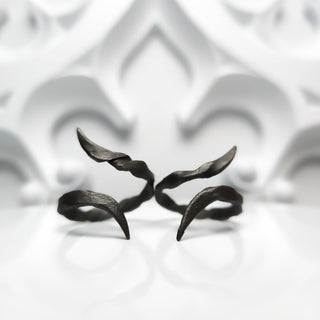Some of the earliest accounts date back to the 1100's where French jewelers, who had gone against the grain, formed their own guilds (which were often allied with the mercers) and may have fashioned jewelry made from base metals (i.e. not gold).
In the early 1800's we see costume jewelry fashioned from cast iron in Russia, which required the use of a dedicated foundry. This foundry went on to replicate many of the pieces of those who gave up their jewelry in order to bolster the campaign against the Napoleonic occupation.
Fast forward to the 1900's and we see a noticeable shift. First, that the style of jewelry is no longer imitating court fashions with a rapidly increasing frequency. Second, that many of the pieces being designed were crafted with the attention to accompany a specifc outfit. They were to be a costume piece— one that is different from our present day perception (i.e. not a halloween costume).
Today, the category of costume jewelry has expanded to include pieces that don't use precious metals as their base. Often times fashion and costume jewelry get tossed into the same blender and have become somewhat synonomous.
For example, the jewelry I make is crafted from steel and brass. Both of these are non-precious metals, which means that my creations fall into the category of costume and fashion jewelry. If I ever decide to create the exact same ring out of gold, the category changes to fine jewlery.


